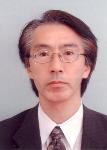Org. Synth. 2012, 89, 98-104
DOI: 10.15227/orgsyn.089.0098
Discussion Addendum for: (Phenyl)[2-(trimethylsilyl)phenyl]iodonium Triflate. An Efficient and Mild Benzyne Precursor
Submitted by Tsugio Kitamura.*
1Discussion
Although many convenient and reliable precursors of benzyne have been prepared and utilized in organic synthesis,
2 a hypervalent iodine-containing molecule,
(phenyl)[2-(trimethylsilyl)phenyl]iodonium triflate (2) , has been developed for service as an efficient and mild benzyne precursor. The major developments over the past years have been the improvement of methods of synthesis of the hypervalent iodine benzyne precursor and the applications to related reactive intermediates. The summary will be reported in this Discussion Addendum.
Improvement of Hypervalent Iodine Precursor
2-(Trimethylsilyl)phenyliodonium triflate 2 generates benzyne more efficiently than other benzyne precursors such as
benzenediazonium-2-carboxylate, o-dihalobenzenes (1,2-bromofluorobenzene and 1,2-dibromobenzene), and 2-(trimethylsilyl)phenyl triflate. The efficiency of this benzyne precursor
2 is attributable to the high leaving group ability of hypervalent iodine groups, which has been discussed previously.
3 Hypervalent iodine benzyne precursor
2 was prepared in two steps from inexpensive and commercially available
1,2-dichlorobenzene. Initial preparation of
1,2-bis(trimethylsilyl)benzene (
1) by reaction of
1,2-dichlorobenzene and Me3SiCl in the presence of Mg and a catalytic amount of I
2 in HMPA is followed by transformation into
2 by the reaction with
PhI(OAc)2 activated with TfOH in
CH2Cl2. However, several drawbacks remained: (1) use of toxic HMPA solvent and severe conditions for the preparation of
1, (2) difficulty for introduction of functional groups, and (3) low solubility of the hypervalent iodine species in most organic solvents.
To improve the reaction procedure, an alternative
benzyne precursor, 2-(hydroxydimethylsilyl)phenyliodonium triflate (
5), has been prepared in three steps starting with
1,2-dibromobenzene.
4 This process avoids the use of carcinogenic HMPA and severe reaction conditions (high temperature and long reaction time). The reaction of
5 with Bu
4NF under mild conditions generates benzyne efficiently, which provides the benzyne adducts in high yields. Therefore,
5 is a convenient alternative benzyne precursor. Incorporation of synthetically important carbonyl groups into hypervalent iodine benzyne precursors is difficult, because carbonyl groups cannot tolerate Grignard conditions. Synthesis of benzyne precursors bearing the carbonyl groups has been accomplished using pyran-2-ones as starting materials. Reaction of
1,2-bis(trimethylsilyl)acetylene with methyl 2-pyrone-5-carboxylate or 5-acylpyran-2-ones at 200 °C in a sealed tube affords the corresponding
methyl 3,4-bis(trimethylsilyl)benzoate5 or
1-acyl-3,4-bis(trimethylsilyl)-benzenes6 in good to high yields, which can be converted to
2-(trimethylsilyl)-phenyliodonium triflates 6, which contain carbonyl groups, by treatment with
PhI(OAc)2 and TfOH. Treatment of
6 with
Bu4NF in CH2Cl2 generates benzynes that contain ketone functionality, and reaction with furan provides the benzyne adducts in high yields. In general, hypervalent iodine benzyne precursors are stable solids and easy to handle, but they do not dissolve in most organic solvents. To improve the solubility of the hypervalent iodine benzyne precursors, long-chained precursors (
7) have been synthesized.
7 As the alkyl chain of benzyne precursors
7 is lengthened, the solubility in non-polar organic solvents and the yield of the benzyne adduct with furan gradually increases.
Figure 1.Improvements of synthetic procedures for hypervalent iodine precursors.
1,2-Bis(trimethylsilyl)benzene (
1) is the key starting material for the synthesis of 2-(trimethylsilyl)phenyliodonium triflate
2. Recent improvement on the synthesis of
1 have been reported in which
1,2-dibromobenzene is used instead of
1,2-dichlorobenzene. The use of
Rieke magnesium or Mg turnings/1,2-dibromoethane8 and
Fe-catalyzed DIBAL-H activated Grignard reaction have led to improved reactions.
9 Through these variations, severe reaction conditions and the use of toxic HMPA solvent can be avoided.
Figure 2. Improvements of synthesis of 1.
Other Applications Using Hypervalent Iodine
When hypervalent iodine and silyl groups are contiguous, fluoride ion can trigger the concerted elimination reaction of these two groups. This method is applicable not only to the generation of benzyne, but also to the generation of reactive intermediates related to benzyne. Thus,
2,3-didehydronaphthalene (
8),
10 bicycle[2.2.1]hept-2-en-5-yne (
9),
11 dehydro-o-carborene (
10),
12 2,3-didehydrothiphene (
11),
13 and
2,3-didehydropyrrole (
12)
14 have been generated by this method. Benzobisoxadisiloles have been applied to synthesis of hypervalent iodine benzyne precursors, which can serve as the synthetic equivalents of
1,4-benzdiyne (
13) and related species.
15
Figure 3. Generation of benzyne-related species using hypervalent iodine/silane methodology.
 |
Tsugio Kitamura was born in Nagasaki, Japan in 1954. He received his B. Eng. and Dr. Eng. degrees from Kyushu University in 1977 and 1982, respectively, under the direction of Prof. Hiroshi Taniguchi. He joined the faculty as assistant professor at Kyushu University in 1982 and was promoted to associate professor in 1993. In 1986-1988 he worked as a postdoctoral fellow with Professor Peter J. Stang at University of Utah, USA. In 2002 he moved to Saga University as full professor. His research interests are in the areas of synthetic organic chemistry including vinyl cations, hypervalent iodines, and transition-metal catalysts.
|
Copyright © 1921-, Organic Syntheses, Inc. All Rights Reserved